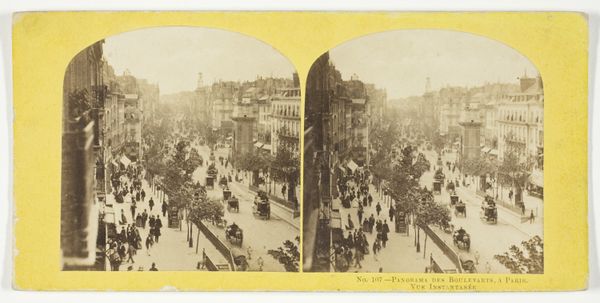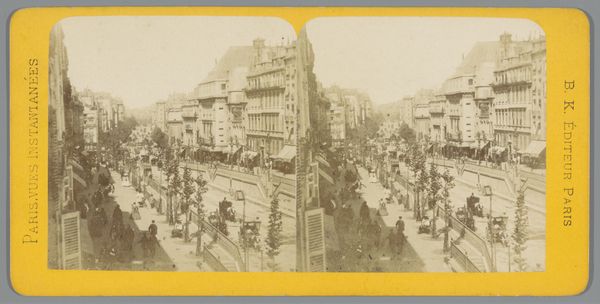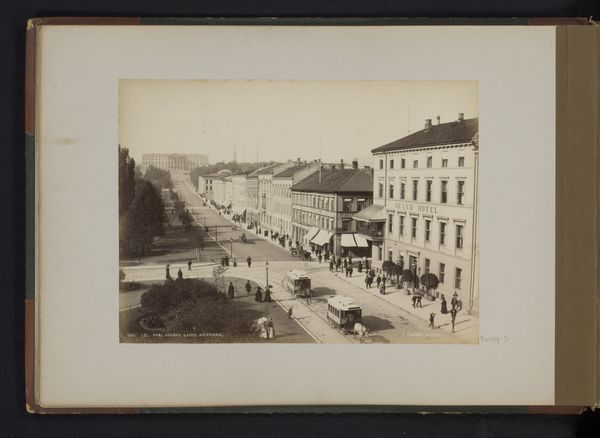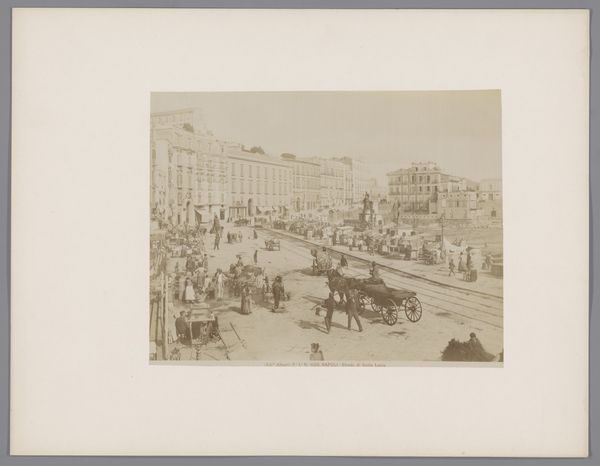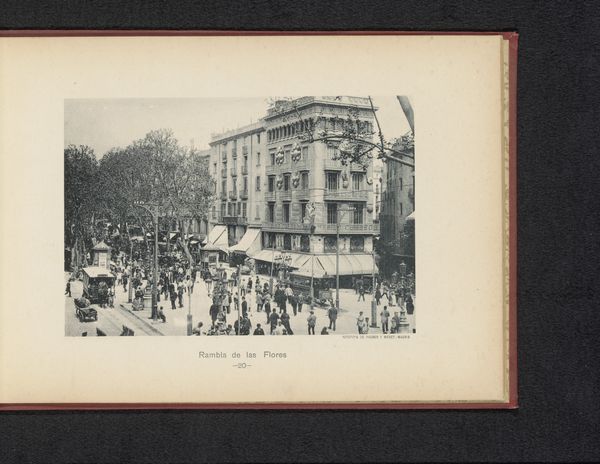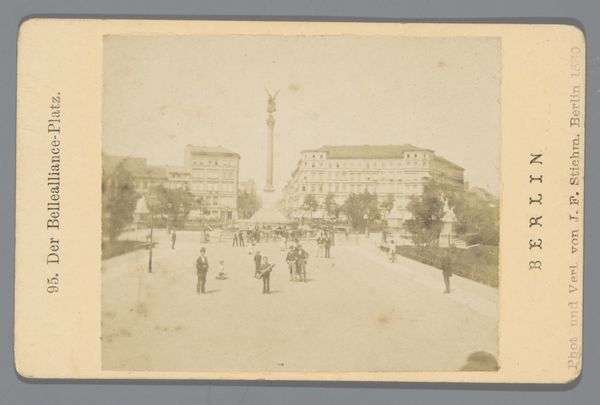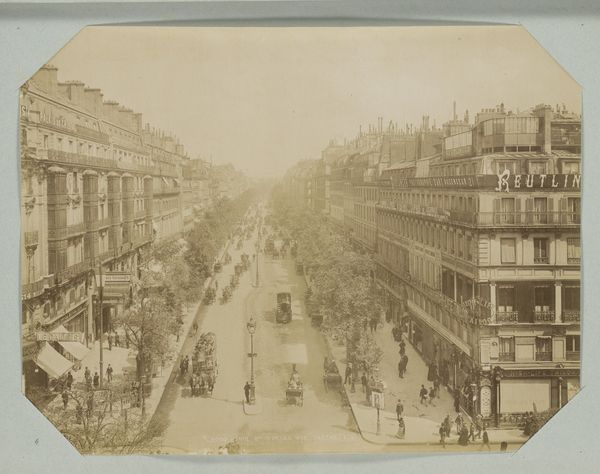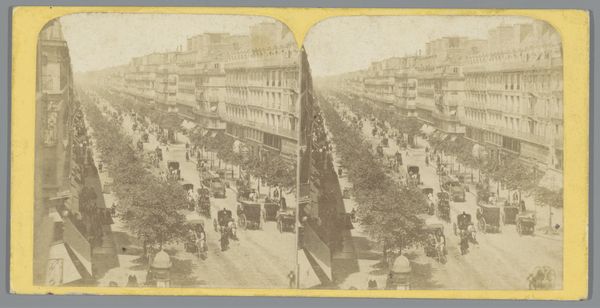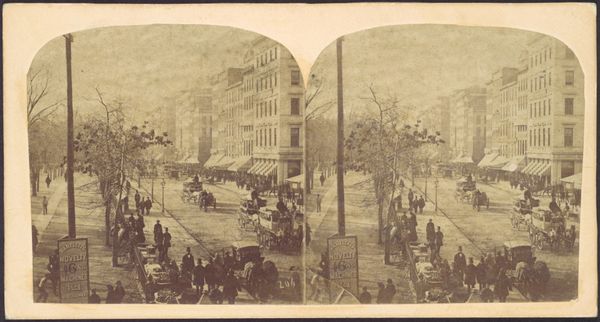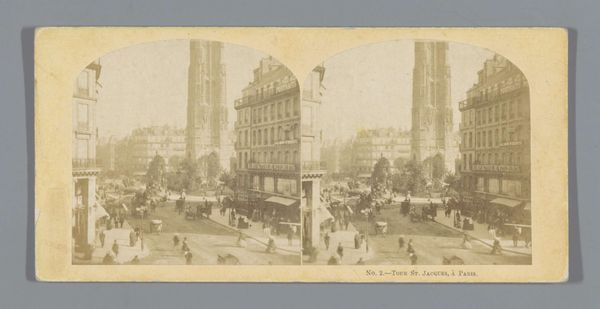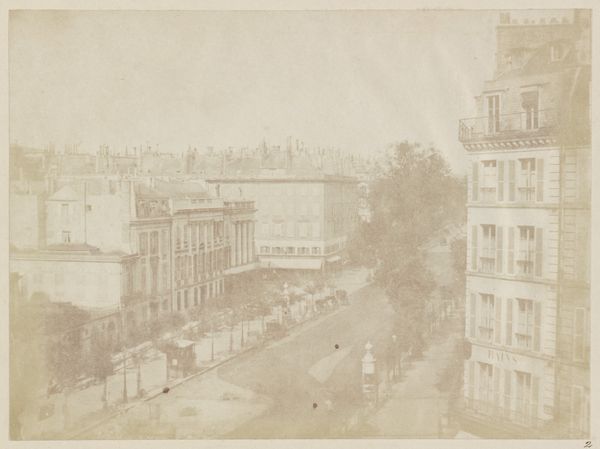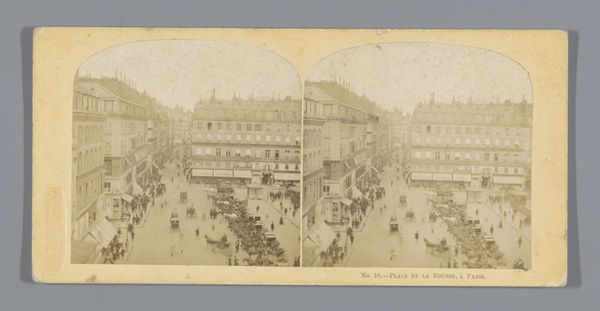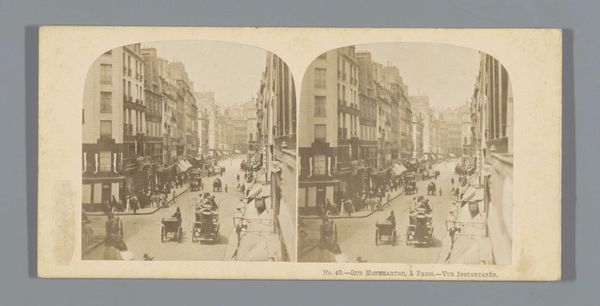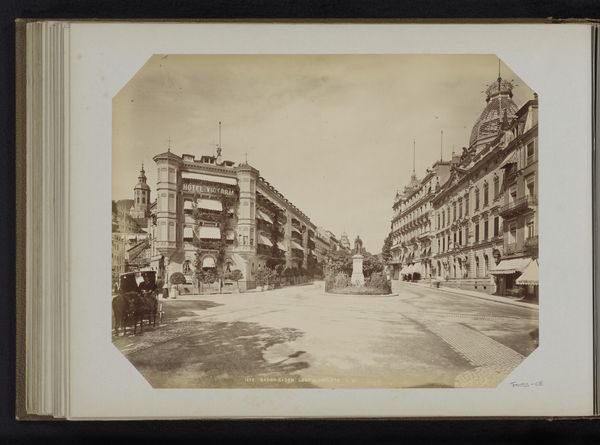
daguerreotype, photography
#
photo of handprinted image
#
daguerreotype
#
street-photography
#
photography
#
cityscape
Dimensions: height 222 mm, width 279 mm, height 304 mm, width 401 mm
Copyright: Rijks Museum: Open Domain
Editor: So, this daguerreotype, "Boulevard St. Denis met de Porte St. Denis, Parijs, Frankrijk," taken sometime between 1865 and 1880 by J. Kuhn... it's really fascinating! It gives you a peek into 19th-century Parisian life. What strikes me is how the bustling street feels almost frozen in time. What do you see in this piece? Curator: Well, beyond the surface level representation, I think it’s a crucial document of urban development and its visual representation. Paris, during that period, was undergoing massive transformations led by Haussmann. This photograph captures the *Porte Saint-Denis* before or during those transformations, marking a moment of transition. The deliberate framing, the inclusion of people from different social strata – does that say anything about the intended audience and the photographic marketplace at the time? Editor: That’s a good point. I guess I was focusing on it as a kind of snapshot, but the staging probably was carefully constructed for the time? It wasn’t simply candid. Curator: Exactly. Early photography, particularly street photography, played a pivotal role in shaping public perception of the modern city. Consider the socio-political context. What role do images like this play in constructing national identity or promoting certain ideas about progress? Editor: Hmm, it seems like these grand boulevards were intended to signal progress and project power, both economic and political. The picture, with its people in their finery, almost affirms that. Do you think there's a hidden message about social classes at the time? Curator: It’s difficult to definitively claim a *hidden* message. However, the way the different social classes are represented is itself telling of its complex urban hierarchy. Maybe, instead of a hidden message, this work poses several questions about class. Editor: I never considered that angle; how photographs of this kind were intentionally fashioned to influence social viewpoints. I was so fixated on the apparent ‘snapshot’ of Paris and didn’t think enough of that moment in relation to city changes, thanks! Curator: And I was able to get your attention using an object! Analyzing images as reflections and shapers of historical and social narratives enhances our understanding. Thank you.
Comments
No comments
Be the first to comment and join the conversation on the ultimate creative platform.
